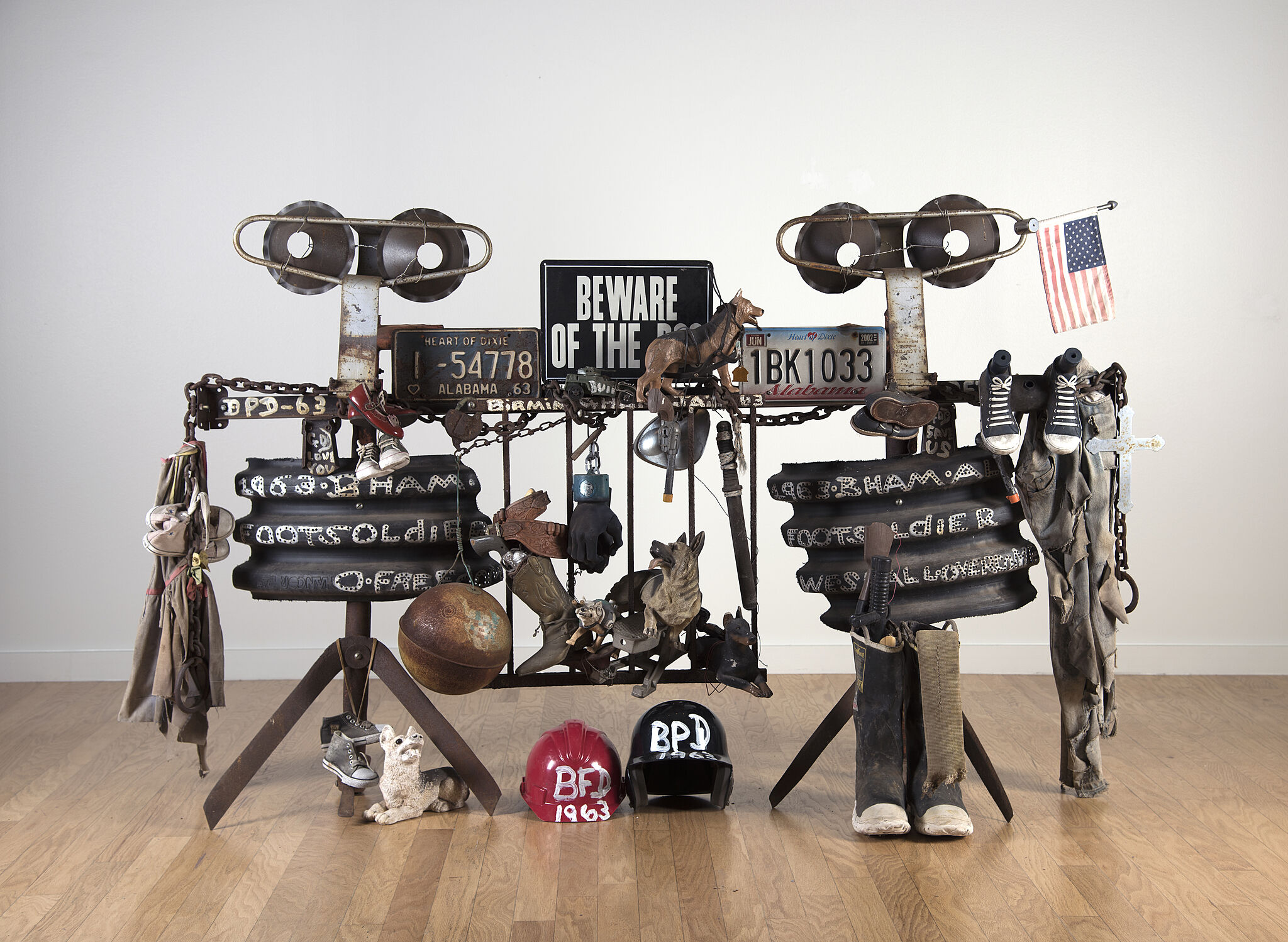Whitney Biennial 2019 | Art & Artists
May 17–Oct 27, 2019
Whitney Biennial 2019 | Art & Artists
Joe Minter
50
Floor 6
Born 1943 in Birmingham, AL
Lives in Birmingham, AL
Joe Minter uses found materials to create allegorical mixed-media critiques of the history of race and class inequities in the United States. Drawing on his training in construction and welding, Minter repurposes the detritus of rural life to make dense, geometrically complex, often anthropomorphic totems that mine the rich tradition of Southern yard art. Abstract assemblages of rusted chains, agricultural tools, household furniture, garments, license plates, and wood fragments on which he occasionally paints texts, Minter’s discrete sculptures share a visual vocabulary and approach with the work for which he is best known—an immersive sculptural environment in Birmingham, Alabama, begun in 1989 that he calls the African Village in America. Working in his backyard, which abuts a historically Black cemetery, Minter has set out to revise and reframe art history to account for four hundred years of excluded, discounted African American history.
’63 Foot Soldiers, 1999
-
0:00
Joe Minter
0:00
Rujeko Hockley: Joe Minter is an artist based in Birmingham, Alabama, where for the last thirty-plus years he’s been working on his life’s work, an installation on his own property called African Village. African Village is assembled of various found materials including, primarily metal, but also street signs, dolls, all sorts of bric-a-brac that he’s found around his neighborhood, all of which is kind of building, in his mind, a large history of the African American experience, particularly in the American South.
Narrator: Biennial co-curator Rujeko Hockley.
Rujeko Hockley: The pieces on view in the Biennial are not a part of African Village, they were made separately from that work. However, like African Village they carry his interest in materials, in metal specifically, in creating forms through found objects as well as alluding specifically to incidents in American history relating to African Americans. In the work 63 Foot Soldiers, he’s thinking specifically about the Civil Rights Movement. The other three works that you see are not quite as directly related to events but also carry some of those connotations.

